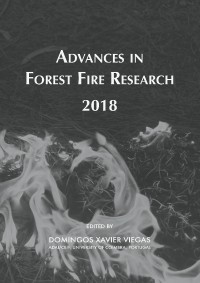Please use this identifier to cite or link to this item:
https://hdl.handle.net/10316.2/44629| DC Field | Value | Language |
|---|---|---|
| dc.contributor.author | Damásio, Carlos Viegas | |
| dc.contributor.author | Bugalho, Lourdes | |
| dc.contributor.author | Medeiros, Pedro | |
| dc.contributor.author | Nascimento, Susana | |
| dc.contributor.author | Santos, Luís Duque | |
| dc.date.accessioned | 2018-11-10T18:44:16Z | |
| dc.date.accessioned | 2020-09-05T02:04:28Z | - |
| dc.date.available | 2018-11-10T18:44:16Z | |
| dc.date.available | 2020-09-05T02:04:28Z | - |
| dc.date.issued | 2018 | - |
| dc.identifier.isbn | 978-989-26-16-506 (PDF) | |
| dc.identifier.uri | https://hdl.handle.net/10316.2/44629 | - |
| dc.description.abstract | Burned area mapping is a fundamental activity for the study of wildfires, but good quality data requires long in situ campaigns performed by specialized personnel. The use of machine learning algorithms and the availability of high-quality remote sensing data bring new opportunities to make the process more precise and expedite. This paper elicits the best combinations of features to be used in machine learning pixel-based burned area mapping, obtained by LASSO regression. The feature selection is applied to ground-truth obtained in the region of Castelo de Paiva, Portugal, in 2016. The selected number of features is 9, from an initial set of 51 features, and includes besides a new index a mix of prefire, postfire as well delta differences of spectral indices (namely dNBR). The selected features can be used with Sentinel 2, Landsat, and MODIS imagery. In parallel, the identified features have been fed to several classifiers, namely a multilayer neural network, gradient boost and extreme gradient boosting, support vector machines and K-nearest neighbour classifiers to validate the choice performed by the LASSO regression. Accuracies of 96% and kappa of 0.86, are consistently obtained for Sentinel 2 imagery, and Landsat 8 also scores very well; as expected, MODIS results in score reduction to the coarser spatial resolution. Confusion maps are presented to visualise the quality of the obtained results, as well as to pinpoint existing problems with the ground-truth. Extreme Gradient Boosting shows to combine very high classification metrics with very efficient processing, possible via the Graphics Processing Units (GPU) implementation of XGBoost. A simple processing architecture is proposed to support an automatic classification system based on the publicly available satellite imagery, supported by the benchmarks obtained in this paper. A set of Sentinel 2 granules covering Portugal can be processed in less than 10 minutes in consumer hardware, for each satellite passage. | eng |
| dc.language.iso | eng | - |
| dc.publisher | Imprensa da Universidade de Coimbra | por |
| dc.relation.ispartof | http://hdl.handle.net/10316.2/44517 | por |
| dc.rights | open access | - |
| dc.subject | Remote Sensing | eng |
| dc.subject | Burned Area Indices | eng |
| dc.subject | Machine Learning | eng |
| dc.subject | Sentinel 2 | eng |
| dc.subject | Landsat 8 | eng |
| dc.subject | MODIS | eng |
| dc.title | Feature selection for burned area classification in the Castelo de Paiva region | por |
| dc.type | bookPart | por |
| uc.publication.firstPage | 1015 | - |
| uc.publication.lastPage | 1023 | - |
| uc.publication.location | Coimbra | por |
| dc.identifier.doi | 10.14195/978-989-26-16-506_112 | - |
| uc.publication.section | Chapter 5 - Decision Support Systems and Tools | por |
| uc.publication.digCollection | PB | por |
| uc.publication.orderno | 112 | - |
| uc.publication.area | Ciências da Engenharia e Tecnologias | por |
| uc.publication.bookTitle | Advances in forest fire research 2018 | - |
| uc.publication.manifest | https://dl.uc.pt/json/iiif/10316.2/44629/200944/manifest?manifest=/json/iiif/10316.2/44629/200944/manifest | - |
| uc.publication.thumbnail | https://dl.uc.pt/retrieve/11016479 | - |
| uc.publication.parentItemId | 55072 | - |
| uc.itemId | 68193 | - |
| item.grantfulltext | open | - |
| item.fulltext | With Fulltext | - |
| Appears in Collections: | Advances in forest fire research 2018 | |
Files in This Item:
| File | Description | Size | Format | |
|---|---|---|---|---|
| feature_selection_for_burned_area_classification.pdf | 995.78 kB | Adobe PDF |  |
Items in DSpace are protected by copyright, with all rights reserved, unless otherwise indicated.
